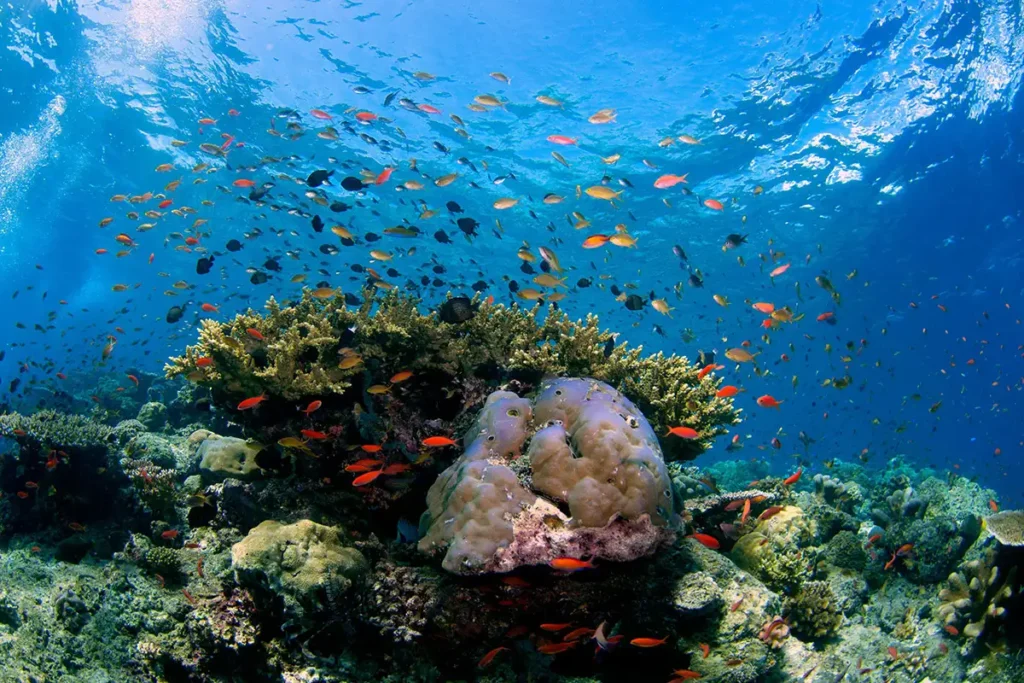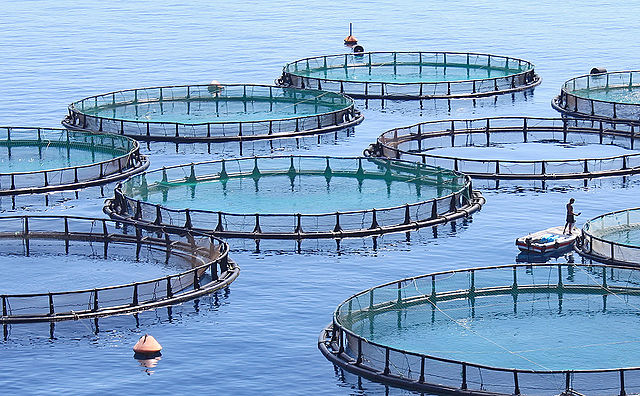Fisheries can maintain the degraded state of the ecosystem. Whether it is freshwater or marine ecosystem. Human activities have forever been an issue for the degradation of the water system. Because of endless exercises like environmental alteration, overfishing, and water contamination the water biological systems have endured a great deal.
Because of these exercises, the environment endured a lot. There has been diminished freshwater accessibility, lower biodiversity and other issues. The disturbance of the biological ecosystems is a genuine danger to the climate and the entire biosphere.
Fisheries can play a fair part in the restoration of the systems. And in dealing with the harm done by human activities. In this blog post, we will have a thorough look at how fisheries can prove beneficial for the environment and maintain these degraded states.
Summary
Human activities have degraded the ecosystems. Specially, the marine and freshwater ecosystems have suffered a great deal. Fisheries can play a fair part in the restoration of the systems.And can help in maintaining the degraded state of these ecosystems.
Degradation Caused by Human Activities
Humans have disturbed the environment by their activities and almost every ecosystem. But here we are going to focus on the two most common ecosystems related to the fisheries.
Freshwater Ecosystems:
Human activities have damaged freshwater ecosystems. Due to these changes, the habitat for the freshwater organisms is altered which as a whole results in disturbance in their life.
Human activities have given rise to water pollution and with overfishing and other things the freshwater ecosystem has to deal with a lot of issues.
Impact on Biodiversity
Due to habitat alteration and pollution biodiversity is at stake. The species are getting endangered day by day. The diversity in the species is decreasing as a result of all these activities.
Due to the shift in biodiversity, normal ecosystem maintenance is becoming an issue to deal with. As some species are on the verge of extinction and some are endangered the food chains are getting disturbed. With this, some species are growing more and more and thus the whole system is disturbed.
Impact on Water Quality:
The freshwater ecosystem is receiving the contaminants from the urban areas and the industrial activities. The agriculture sector effluent is also being dumped into the freshwater streams and thus the freshwater streams are getting polluted. It is compromising heavy metals pesticide residues etc. All of which make Thai freshwater unfit for drinking and for the freshwater species.
The freshwater ecosystem is also dealing with eutrophication. In eutrophication the excessive soil nutrient runoff into the water streams. This leads to algal blooms and oxygen depletion. Due to this, the water quality as a whole suffers.
Another way how the water quality gets affected is by the dams and the irrigation system. The natural water flow is disturbed through these establishments and thus the aquatic habitat and the water quality are hampered.
Key Points
- The freshwater ecosystem has the issue of eutrophication due to soil nutrient runoff.
- Agricultural water pollution due to pesticide residues.
- Habitat alteration leads to decreased biodiversity.
- Food chain disturbance by lower biodiversity leads to disturbance in the ecosystem.
Marine Ecosystems

The marine ecosystem has also suffered through pollution and other activities. Due to these marine life and ecosystems are facing biodiversity issues, food web issues etc.
Biodiversity
Because of the disturbance of the marine biological system, marine biodiversity is facing issues. There are numerous species which are getting into the endangered zone and some are at the mark of extinction.
Inside the marine ecosystem, there has been an introduction of some exotic species. It means
that some species which are not part of the marine ecosystem are added into the marine landscape due to human activities and their introduction hampered native ecosystems and some species’ survival became endangered.
Water Quality
The marine water is unfit for drinking due to the higher amount of salts and other issues. But the water quality is important for marine life.
The industrial discharge and agricultural runoff plastics wastages ultimately go into the seawater and thus they disrupt the water quality. So the marine life has to deal with this water pollution.
Another real sign of disturbance is the increase in the level of carbon dioxide. With human activities the carbon dioxide level rises and they impact marine life. Apart from that the physical habitat is also damaged by the coastal development and dredging. All these activities affect the marine ecosystem.
Key Points
- Due to human activities marine life and ecosystems are facing biodiversity issues, food web issues.
- Exotic species and water quality are a risk for the endangered species and the whole marine ecosystem.
- Industrial discharge and agricultural runoff plastics disturb the marine water quality.
- Increased CO2 and coastal development and dredging are disturbing the natural habitat.
Role of Fisheries in Ecosystem Maintenance
So after having an overview regarding how human activities have impacted the water ecosystems. Now we have to go towards a solution. And fisheries can help a great deal in the maintenance of the ecosystem. With sustainable fisheries management, the ecosystem can be maintained and restored. Here, we have a bunch of points regarding how fisheries can help in ecosystem restoration and conservation.
Balancing the Ecosystem
Sustainable fisheries help in keeping up the equilibrium in the biological system by maintaining the natural food chains and the food webs. This way the chances of some species’ populations collapsing are greatly reduced. And thus the proper food chain channels are maintained. It helps in the appropriate growth of every species and thus the balance is maintained.
Biodiversity

This point is also somewhat related to the previous point. Fisheries management helps in increasing the population of certain species which are collapsing. This will help in the preservation of biodiversity.
By sustainable fisheries activities, the overexploitation of the species is prevented. This way the species which are vulnerable or which are at extinction are protected. Thus this helps in biodiversity protection and preservation overall.
To preserve biodiversity the maintenance of the marine habitat required for the organisms is critical. Sustainable fisheries practices work on the maintenance of the habitat protecting stuff like coral reefs and seagrass beds etc. These habitats are required for the appropriate growth of the organisms. So by their provision, the biodiversity is preserved.
Sustainable Fisheries Practices
As we already discussed the role of fisheries in ecosystem maintenance. Now we will talk about sustainable fishery practices.
Sustainable fisheries practices can help a great deal firstly in the fish stocks and their long-term viability. And apart from these obvious benefits sustainable practices also help in ecosystem maintenance.
Here we have compiled some of the major sustainable agricultural practices.
Selective Fishing
Selective fishing is one of the sustainable fisheries practices. In the selective fishing practice, the focus is on preventing the capturing of any fish species that is endangered. Or any other fish which was not your target. This can be explained as targeted fishing in which we only capture what we are looking for and let go of any other species that comes our way.
The benefit of selective fishing is that with selective fishing we only get what we want and therefore the other species’ population remains intact. This helps in maintaining their growth and hence the biodiversity increases. The decrease of the non-targeted species is greatly reduced through this as well.
Ecosystem-Based Management
In this practice, the ecosystem considerations are focused on fisheries management. The aim is to build an ecosystem that can stand on its own and the changes that can help in focusing on this goal are made.
Through this approach, the balance within the ecosystems is maintained. The habitats are protected.And overall with the long-term incorporation of this ecosystem-based advice into your practices the whole marine environment sees long-term benefits as a result.
Habitat Restoration
Another sustainable fishery practice is habitat restoration. In this process, the critical habitat of marine life such as the coral reefs, mangroves and seagrass beds are restored and maintained.
The marine life can only grow at places which are natural to them. Or the places which are their natural habitats. Due to these habitats’ destruction, they are unable to grow at their appropriate rate and thus they become a danger the marine life.
With the restoration of the marine habitat, the biodiversity increases overall. The marine species get their desired habitat. Just like when we are at our homes we feel safe and in shelter same goes with them. Thus they maintain their optimum growth levels and enhance the marine environment health overall.
Implementing Quotas
Another sustainable fishery practice is implementation of the quotas. The qualitas in simple terms are the set amount of fish that can be captured. And in that range, there is no risk of overfishing and sustainability.
It is highly advised to implement these quotes and limit the fishing. This way the growth of the fish is also in check as fishing is allowed but at the same time the damage to the species due to overfishing is also reduced.









